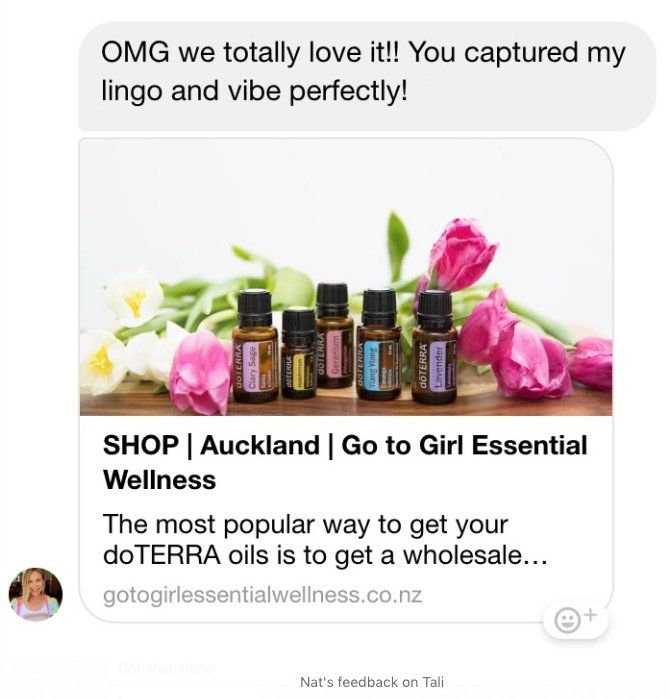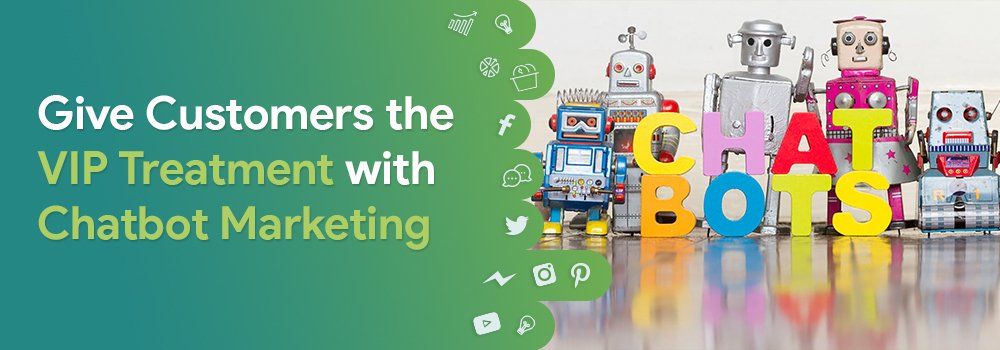
I Turned My Friend Into A Chatbot On Facebook
My hack as a conversation designer for creating Facebook chatbot personality?
I just use one of my friends.
As marketers, conversation designers, developers, we often look to complexity as being the best approach to quality. We take the long route. We follow painstaking processes. That’s the way we were taught.
Chatbot personality is no exception.
My argument is that intuition can be an easier way to help reach the same, if not better, more effective, solutions. Not every step, but certain steps.
Why Create A Chatbot Personality?
If you don’t already know why you’d want a personality for a chatbot, there’s plenty of evidence to suggest it’s basically a must. Whether the chatbot is for brand, Q&A, customer service, or sales.
I also presented a Humanising Your Bot webinar that covers off some tips and techniques.
In a nutshell, a chatbot with personality is all about engagement, trust, memorability and likeability. It’s also about personifying the brand.
It’s the same way good business is built on relationships. We tend to make most of our decisions emotionally, then rationalise them. It’s logic in reverse, but it’s our go-to. In fact we feel uncomfortable within ourselves when making a decision that doesn’t match our gut desire.
We also remember the way we feel (about people and chatbots) far more readily than we remember what they’ve actually said. We’re also more likely to engage if the feeling is positive.
In the debate over whether Siri or Alexa is the better voice interface, the top Google result on the topic is a rap battle between the two. Case in point.
This doesn’t mean that your chatbot has to be a master of conversation with witty AI comebacks to every question. The chatbot can still be simple. Even a basic Facebook Messenger bot using a free platform can have personality.
In fact a good personality can help cover for a chatbot’s limitations. In our podcast, Why Do We Hate Chatbots, we discussed how there is often a disconnect between the user’s expectations and the chatbot’s capability. Especially if it’s a simple, rule-based Facebook bot using a free platform.
Imperfections are easier to forgive if we like the chatbot we’re dealing with.
The Chatbot Personality: Step One, Brand Discovery
Yes, intuition will shape our chatbot personality. But the first step towards that is definitely about due diligence and discovery.
It makes sense. Most working chatbots have an objective, a brand they represent, and an audience they need to connect with. It’s important that we understand these things well, before anything else.
Discovery involves finding out all three.

- What do we need the chatbot to do, what things should it achieve for you? Setting goals and planning the conversational flow to achieve those goals is a largely logistical, “if-then” task. We’re not discussing the process of mapping the conversation, here: this is purely about personality.
- What is the brand the chatbot represents? Every brand has its voice, be it casual, corporate; upbeat or painfully polite; inspired or insipid. Often a checklist of brand descriptors can help this part of the process
- What is the core audience? Most brands should have a key target customer. If figures are available (through social, CRM, or any other source) it’s possible to determine this without too much trouble.
All of this information is important, because it’s the raw material that goes into your brain. Then you can let intuition do its thing, and come up with a chatbot personality that will engage the user.
Chatbot Personality Step Two: Intuitive Deduction
This is my favourite bit, because it’s where the “a-ha” happens.
It’s where you have digested the figures and keywords, and your intuition gets to create life from them all.
Before we go any further, a word about intuition.
Our beliefs tell us that intuition is some gut level, non-thinking, spiritual or supernatural voice that is somehow more insightful than our logical brain. “Intuition comes from the heart and is free of the mind’s constraints, prejudices, or preconceptions.”
Actually, intuition IS our brain. Our brains do most of their thinking without us being aware of it. Consciousness, or awareness, is relatively superficial. It rides on the surface, while the heavy lifting is done in the subconscious.
Intuition is the product of a working brain consulting its own exhaustive library of experiences, observations, successes and mistakes. Intuition is when you already know the answer, but your consciousness hasn’t discovered it yet.
So. When I say to trust your intuition, I’m not saying that you leave behind common sense or process. I’m just saying that you probably already have some powerful resources primed and ready just beneath the conscious layer of your mind, and they’re likely to do you a pretty good job of delivering a solution.
As I said at the beginning, to create a convincing chatbot personality, I build it from somebody I already know.
Otherwise, if you’re creating a personality from scratch, you not only need to figure out what words they’ll use, jokes they’ll make, and what their attitudes might be. You also need to understand why.
What happened in their past, who were the people that influenced them, what made them who they are, throughout their life? Why do they have these attitudes, culturally, emotionally, interpersonally?
A Simple Hack to a Complicated Problem
Every person, real or fictitious, has many subtle influences that make them who they are, and creating all of that from scratch, mapping out the cause-and-consequence, is difficult and time-consuming. And not necessarily the best use of your billable hours.
The wonderful thing about writing the chatbot as somebody you know is that all of those things should already be filled in. You know their history, why they are who they are. Also you know their attitudes, their sense of humour. You know how they would react to different situations.
You have a fleshed-out, well rounded character for your chatbot, one whose life story makes them a match for your intended audience. Best of all, you can write from their perspective, convincingly and engagingly.
So how do you decide who your victim will be?
Which friend are you going to turn into a chatbot?
You look first at the information you have already gathered in your discovery.
- The objective
- The brand voice
- The user profile or target audience
Ask yourself, who in my network of friends would relate best to these things?
This process of ‘who’ is letting intuition do a lot of the work. But as intuition is built on our own learned knowledge and experience, most of the time your so-called gut will get it pretty right.
First, I identify the person. I usually start with their photo, and come up with a name. For me, that’s just a good way of keeping them central to my mental focus as I start to write the description.
Now I can’t stress enough that you are only using this real person as a template for your chatbot. You’re not trying to actually recreate them in a digital format.
Unless it’s a deliberate strategy, change their name. Don’t reveal any personal details, and don’t even think about using their photograph for the chatbot. Even with their permission, it’s not a good idea, and could lead to unintended consequences.
I’ll give you an example of how it works.

Tali: The Chatbot I Hacked A Friend’s Personality For
The name Tali is safely culturally-neutral South Pacific. It’s perfect for a New Zealand polycultural audience, but also a convenient contraction of the client’s own name. Box ticked.
My discovery meeting with the client also uncovered the following:
- The audience: the woman entrepreneur. Often juggling career with family, she’s time-poor, frequently stressed, and may be faced with moments of self doubt or frustration.
- The brand: empowering, motivating, uplifting. Kind, compassionate, empathic. A service that aims to look after its clients, body and soul, to better equip them for their challenging lives.
- The objective: to qualify new leads by helping them choose a service, with options like wellness, coaching, personal development.
The person I based Tali on is a former work colleague, and friend, whom I know well enough to be able to write convincingly, phrase things in the way she might speak, react in the way she might react, and demonstrate her rich emotional values.
In Tali’s case, they include compassion, empathy, drive, practicality, solution-providing and positivity – all qualities that were circled in the client’s brand discovery document, and sit well with the core audience.
Boom: You’ve Got a Chatbot Personality!
Intuition and a simple hack have helped create a well-rounded, believable, and effective chatbot for your brand and audience.

The client loved Tali. So she should. My friend was an absolute fit for the audience. She’s open minded, she’s a problem solver, she’s an enabler in the most positive sense. A mother herself, she can relate to the target audience’s daily chaos. She’s smart, cool under pressure, wouldn’t hesitate to bitchslap any idiot who deserved it, and she’s funny.
Now, just a caveat to my remark about bitchslapping – and by the way, my friend isn’t the sort to actually slap anybody. That’s just a phrase relating to verbal backchat. But the term is sure to have offended somebody.
And that’s the point.
Attitude is Everything
The automatic thing for a conversation designer, and for the client, is to avoid anything that might be considered ‘offensive.’ Especially in this age of outrage and the angry mob of social media.
However, a former creative director of mine had a saying: “the only bad advertising is forgettable advertising.” Whether you love it or hate it, at least you won’t forget it. A chatbot is much the same. A lively conversation that has the potential to upset somebody, particularly somebody outside the core target, creates that sense of bonding, community, tribalism, and connection.
It makes it memorable.
Case in point. The first chatbot to enjoy true mass popularity was SmarterChild, the ActiveBuddy chatbot that was employed across multiple channels. SmarterChild had a following of more than 30 million users, back in 2000.
In the words of its creator, Robert Hoffer, one of the key reasons SmarterChild failed in the end? Microsoft effectively removed its personality,“fearing that its attitude would upset some people.”
In the case of Tali, and indeed the woman she was modelled after, a little curt aside about creepy male compliments in the boardroom is probably going to wind somebody up. If it does, go Tali! 👍🏽
More strategically, an attitude like Tali’s can, as I mentioned earlier, deflect potential user frustration. Instead of responding to unexpected inputs with the tired old “I’m sorry, I didn’t understand that,” Tali brings game to the conversation: “Woah there Tarrentino, stop typing, if you want to talk to me you can click the buttons like everybody else.”
People will forgive her limitations with a smile, and just enjoy the experience.
A Sassy Chatbot With Real Personality
There’s the hack. That’s why I turned my friend into a chatbot on Facebook.
Once you know the brand, and the audience, creating the chatbot’s personality is as easy as thinking of the friend who fits best. Trust your intuition and write as if it was them talking. Protect your friend’s identity, but dig deep into the rich goldmine of their human fallibility, humour, nuance and attitude.
You’ll get a better chatbot conversation at the end of it.
Interested in building, fine-tuning, or improving your chatbot?
Join us at the Conversologist Lab to learn how.
Edited from The Conversologist Podcast, Episode 9 – Hacks For Designing a Chatbot Personality


